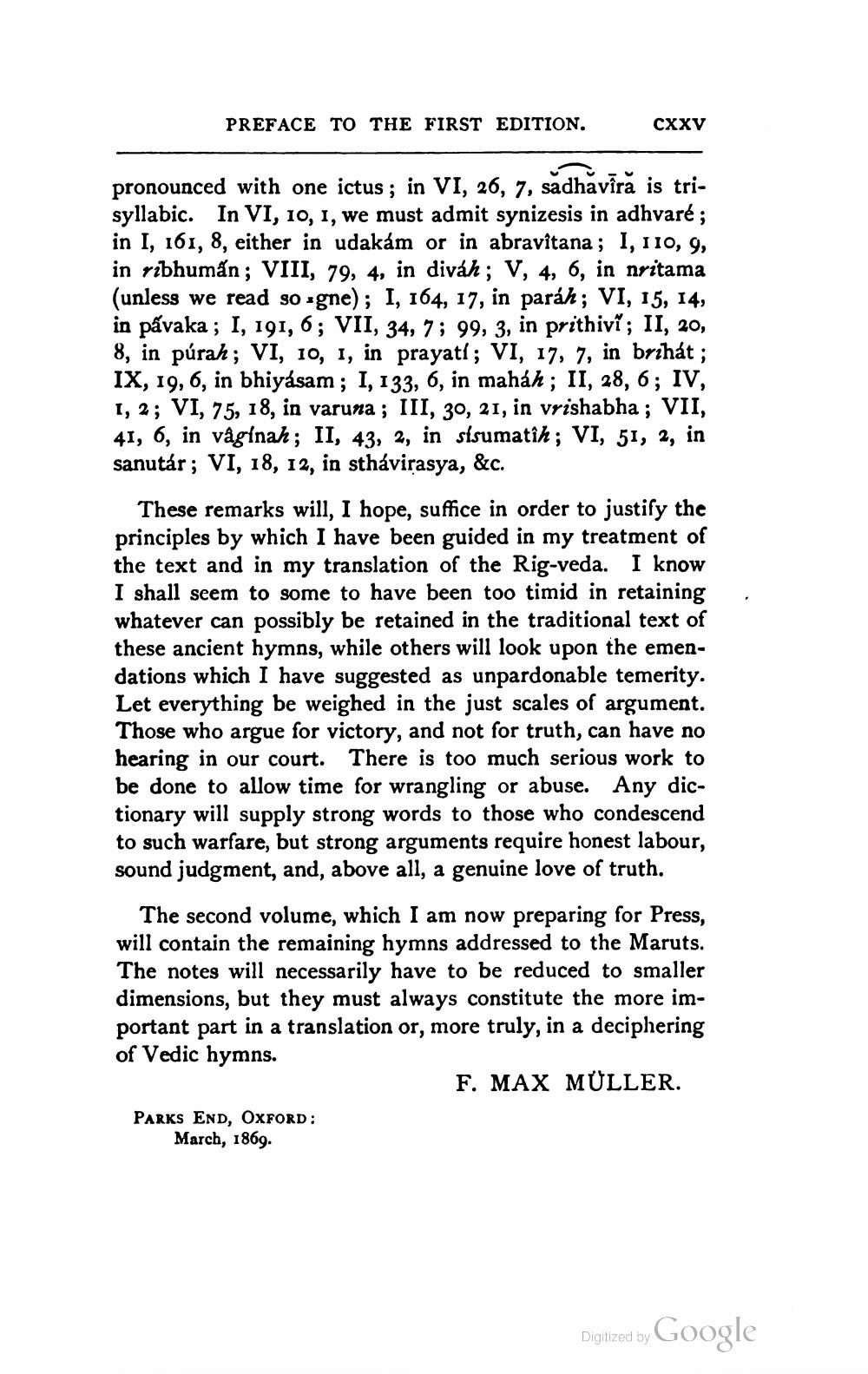________________
PREFACE TO THE FIRST EDITION.
CXXV
pronounced with one ictus; in VI, 26, 7, sădhăvīră is trisyllabic. In VI, 10, 1, we must admit synizesis in adhvaré; in I, 161, 8, either in udakám or in abravitana; I, 110, 0, in ribhumán; VIII, 79, 4, in diváh; V, 4, 6, in nritama (unless we read so-gne); I, 164, 17, in paráh; VI, 15, 14, in pávaka ; I, 191, 6; VII, 34, 7; 99, 3, in prithivi ; II, 20, 8, in púrah; VI, 10, 1, in prayati; VI, 17, 7, in brihát ; IX, 19, 6, in bhiyásam ; I, 133, 6, in mahah ; II, 28, 6; IV, 1, 2; VI, 75, 18, in varuna ; III, 30, 21, in vrishabha ; VII, 41, 6, in våginah; II, 43, 2, in sisumatîh ; VI, 51, 2, in sanutár; VI, 18, 12, in sthavirasya, &c
These remarks will, I hope, suffice in order to justify the principles by which I have been guided in my treatment of the text and in my translation of the Rig-veda. I know I shall seem to some to have been too timid in retaining whatever can possibly be retained in the traditional text of these ancient hymns, while others will look upon the emendations which I have suggested as unpardonable temerity. Let everything be weighed in the just scales of argument. Those who argue for victory, and not for truth, can have no hearing in our court. There is too much serious work to be done to allow time for wrangling or abuse. Any dictionary will supply strong words to those who condescend to such warfare, but strong arguments require honest labour, sound judgment, and, above all, a genuine love of truth.
The second volume, which I am now preparing for Press, will contain the remaining hymns addressed to the Maruts. The notes will necessarily have to be reduced to smaller dimensions, but they must always constitute the more important part in a translation or, more truly, in a deciphering of Vedic hymns.
F. MAX MULLER. PARKS END, OXFORD:
March, 1869.
Digitized by Google




